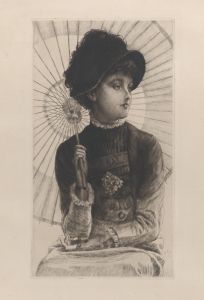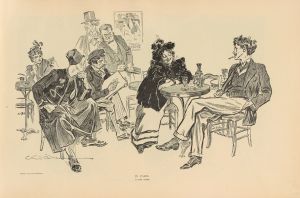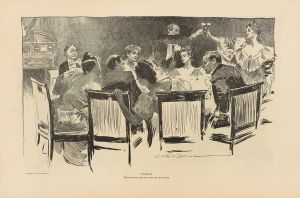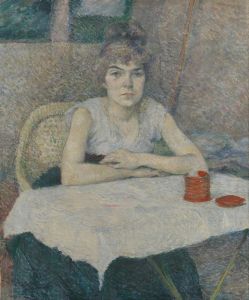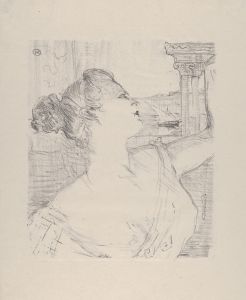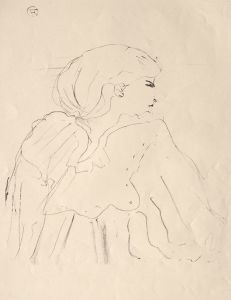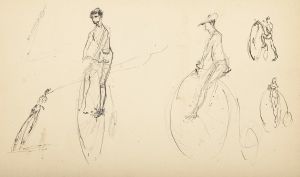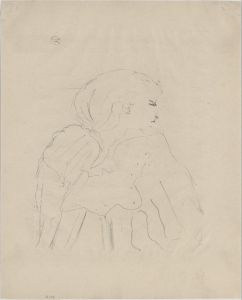
Lady with a Dog
A hand-painted replica of Henri de Toulouse-Lautrec’s masterpiece Lady with a Dog, meticulously crafted by professional artists to capture the true essence of the original. Each piece is created with museum-quality canvas and rare mineral pigments, carefully painted by experienced artists with delicate brushstrokes and rich, layered colors to perfectly recreate the texture of the original artwork. Unlike machine-printed reproductions, this hand-painted version brings the painting to life, infused with the artist’s emotions and skill in every stroke. Whether for personal collection or home decoration, it instantly elevates the artistic atmosphere of any space.
Henri de Toulouse-Lautrec, a prominent French painter, printmaker, and illustrator, is renowned for his depictions of Parisian nightlife in the late 19th century. Among his extensive body of work, "Lady with a Dog" is one of his lesser-known paintings. Toulouse-Lautrec's art often captured the vibrant and sometimes decadent life of Paris, particularly in the Montmartre district, where he spent much of his time.
"Lady with a Dog" exemplifies Toulouse-Lautrec's keen observation of human behavior and his ability to convey character through posture and expression. Although specific details about this painting are scarce, it is consistent with his style during the period when he was actively painting scenes of everyday life, often focusing on individuals in intimate or candid moments.
Toulouse-Lautrec was born into an aristocratic family in 1864 in Albi, France. Despite suffering from health problems that stunted his growth and left him physically disabled, he pursued an artistic career with determination. He moved to Paris in the early 1880s, where he studied under prominent artists and began to develop his distinctive style. His work was heavily influenced by the Impressionists and the Japanese ukiyo-e prints that were popular in Europe at the time.
Throughout his career, Toulouse-Lautrec was fascinated by the people who inhabited the fringes of society, including performers, prostitutes, and the working class. His paintings and posters often depicted the lively and sometimes sordid world of cabarets, dance halls, and brothels. He had a unique ability to capture the essence of his subjects with a few deft strokes, often using bold colors and expressive lines.
In "Lady with a Dog," Toulouse-Lautrec likely employed his characteristic style of using loose brushwork and a limited color palette to focus on the interaction between the woman and her pet. Dogs were a common motif in his work, symbolizing companionship and loyalty, and they often appeared in his portraits to add a layer of narrative or emotional depth.
Toulouse-Lautrec's work was not always appreciated during his lifetime, as his candid portrayals of Parisian life were sometimes considered controversial. However, his art gained recognition for its innovative approach and its ability to capture the spirit of the age. Today, he is celebrated as one of the most important artists of the Post-Impressionist period, and his works are held in major museums and collections worldwide.
"Lady with a Dog" reflects Toulouse-Lautrec's enduring interest in the human condition and his skill in portraying it with empathy and insight. While this particular painting may not be as famous as some of his other works, it nonetheless contributes to our understanding of his artistic legacy and the world he depicted with such vividness and humanity.





